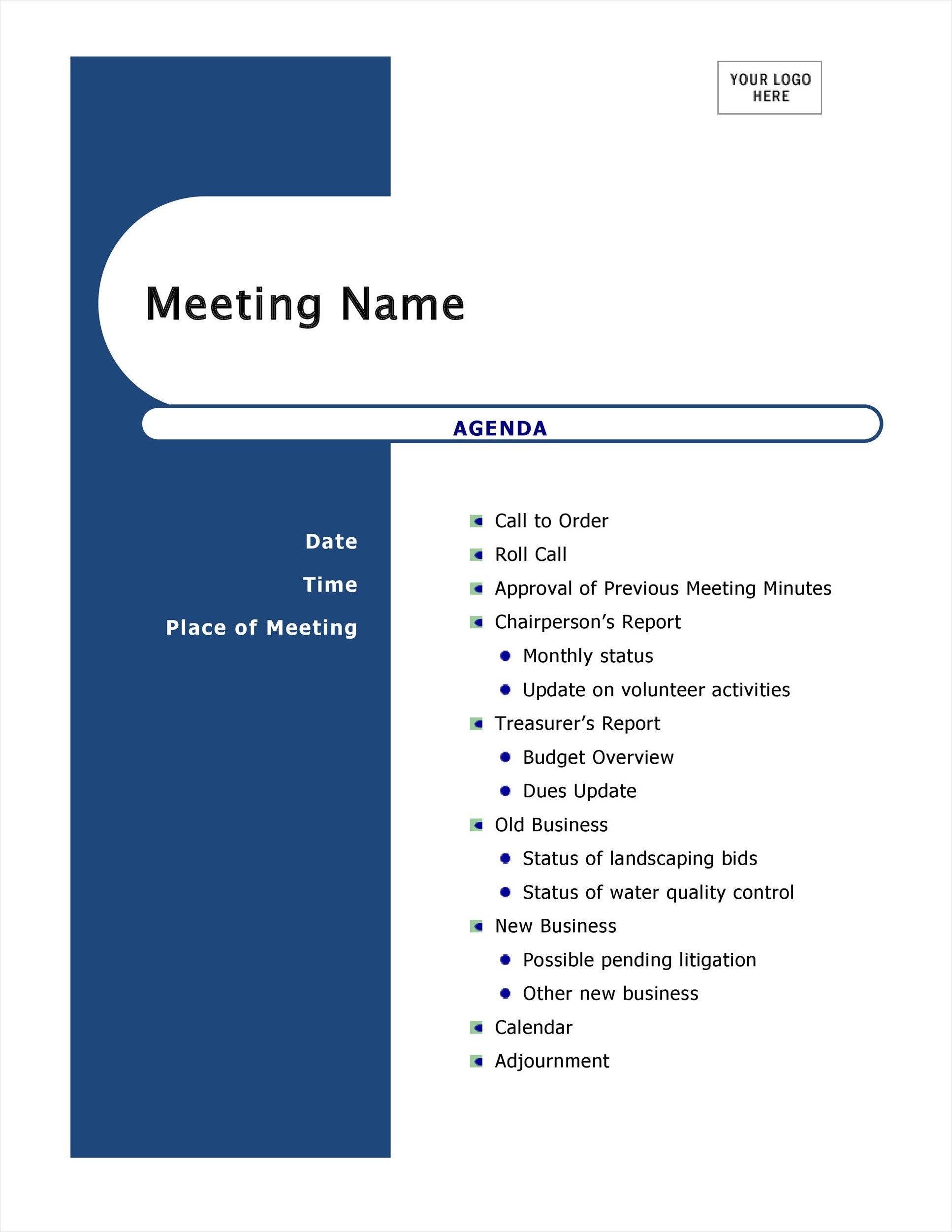
A corporate meeting agenda is a document that outlines the topics and objectives to be discussed during a business meeting. It serves as a roadmap for the meeting, ensuring that participants stay focused and productive. A well-crafted agenda can help maximize the efficiency of a meeting and ensure that all necessary topics are covered.
Why is a Corporate Meeting Agenda Important?
A corporate meeting agenda is essential for several reasons. Firstly, it provides structure and clarity to the meeting, ensuring that everyone is on the same page. It helps participants prepare for the meeting in advance and come prepared with relevant information or materials. Additionally, an agenda helps keep the meeting on track and prevents it from veering off-topic or becoming unproductive.
Without a clear agenda, meetings can become chaotic and unfocused, wasting valuable time and resources. A well-planned agenda sets expectations for the meeting and helps participants understand the purpose and goals of the discussion. It also provides a reference point for future meetings, allowing participants to track progress and follow up on action items.
How to Create an Effective Corporate Meeting Agenda
Creating an effective corporate meeting agenda requires careful planning and consideration. Here are some steps to help you create an agenda that will lead to a successful meeting:
1. Identify the Meeting Objectives
Before creating the agenda, determine the main objectives of the meeting. What do you hope to accomplish? Are there specific decisions that need to be made or information that needs to be shared? Clearly define the purpose of the meeting to guide the agenda-creation process.
2. Determine the Agenda Structure
Decide on the structure of the agenda based on the objectives and the time available for the meeting. Consider whether you need to allocate specific time slots for each agenda item or if you can allow for more flexibility. It’s important to strike a balance between providing enough time for discussion and keeping the meeting on schedule.
3. List the Agenda Items
Once you have determined the structure, make a list of the agenda items in the order they will be discussed. Start with the most important or time-sensitive topics and work your way down. It’s helpful to include a brief description or purpose for each agenda item to provide context for participants.
4. Assign Time Limits
Assign time limits for each agenda item to ensure that the meeting stays on track. Be realistic with the time allocations and allow for some buffer time in case discussions run longer than anticipated. Communicate the time limits to participants in advance so they can plan their contributions accordingly.
5. Add Supporting Materials
If there are any supporting materials or documents that participants need to review before the meeting, include them in the agenda. This allows participants to come prepared and ensures that everyone has the necessary information to contribute meaningfully to the discussion. Provide links or attachments to the materials for easy access.
6. Include Breaks and Q&A Sessions
Consider including breaks and dedicated Q&A sessions in the agenda to allow participants to rest, ask questions, and provide feedback. Breaks can help maintain engagement and prevent fatigue during long meetings, while Q&A sessions allow for clarification and discussion on specific topics.
7. Distribute the Agenda in Advance
To ensure that all participants are well-prepared and have a clear understanding of the meeting’s objectives, distribute the agenda in advance. Ideally, send it out at least a few days before the meeting to give participants enough time to review and prepare. This also allows them to suggest any additional agenda items if necessary.
8. Review and Adjust
After the meeting, review the agenda and evaluate its effectiveness. Did it achieve the desired outcomes? Were there any items that could have been omitted or included? Use feedback from participants to make adjustments and improve future agendas.
Sample Corporate Meeting Agenda
Here is an example of a sample corporate meeting agenda:
- Meeting Date: [Date]
- Meeting Time: [Time]
- Location: [Location]
1. Introductions (10 minutes)
Allow participants to introduce themselves and briefly state their roles and responsibilities.
2. Review of Previous Meeting Minutes (15 minutes)
Review the minutes from the previous meeting and address any action items or follow-up tasks.
3. Presentation of Financial Report (30 minutes)
Present the financial report for the quarter, highlighting key metrics and discussing any notable trends or challenges.
4. Discussion of Marketing Strategy (45 minutes)
Engage in a discussion about the marketing strategy for the upcoming quarter, including target audience, channels, and campaign ideas.
5. Break (15 minutes)
Allow participants to take a short break and recharge before continuing with the meeting.
6. Proposal for New Product Development (60 minutes)
Present a proposal for a new product or service and discuss the potential benefits, risks, and implementation plan.
7. Q&A Session (30 minutes)
Open the floor for questions, feedback, and discussion on any topics covered during the meeting.
8. Next Steps and Action Items (10 minutes)
Summarize the key decisions made during the meeting and assign action items to appropriate individuals. Set deadlines and follow-up plans.
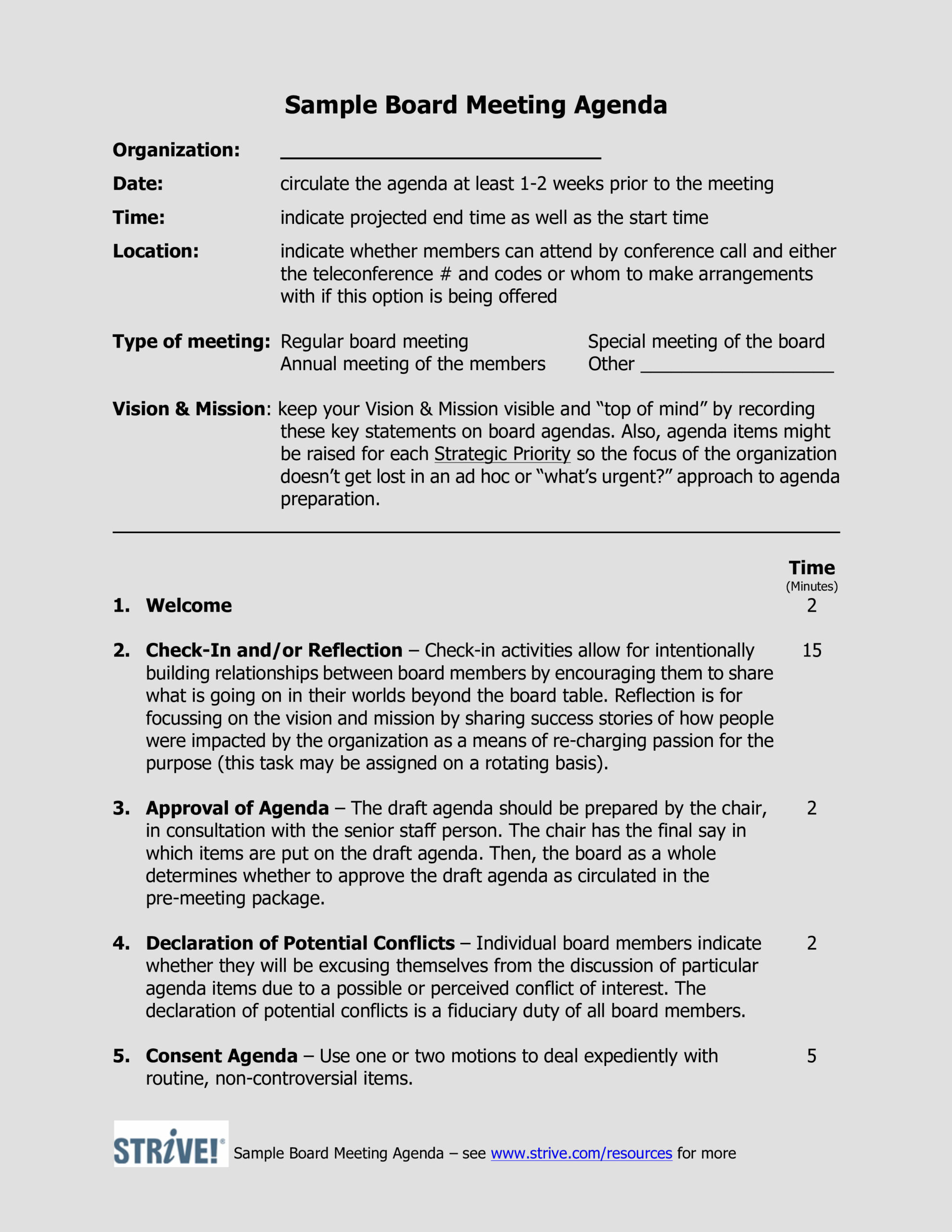
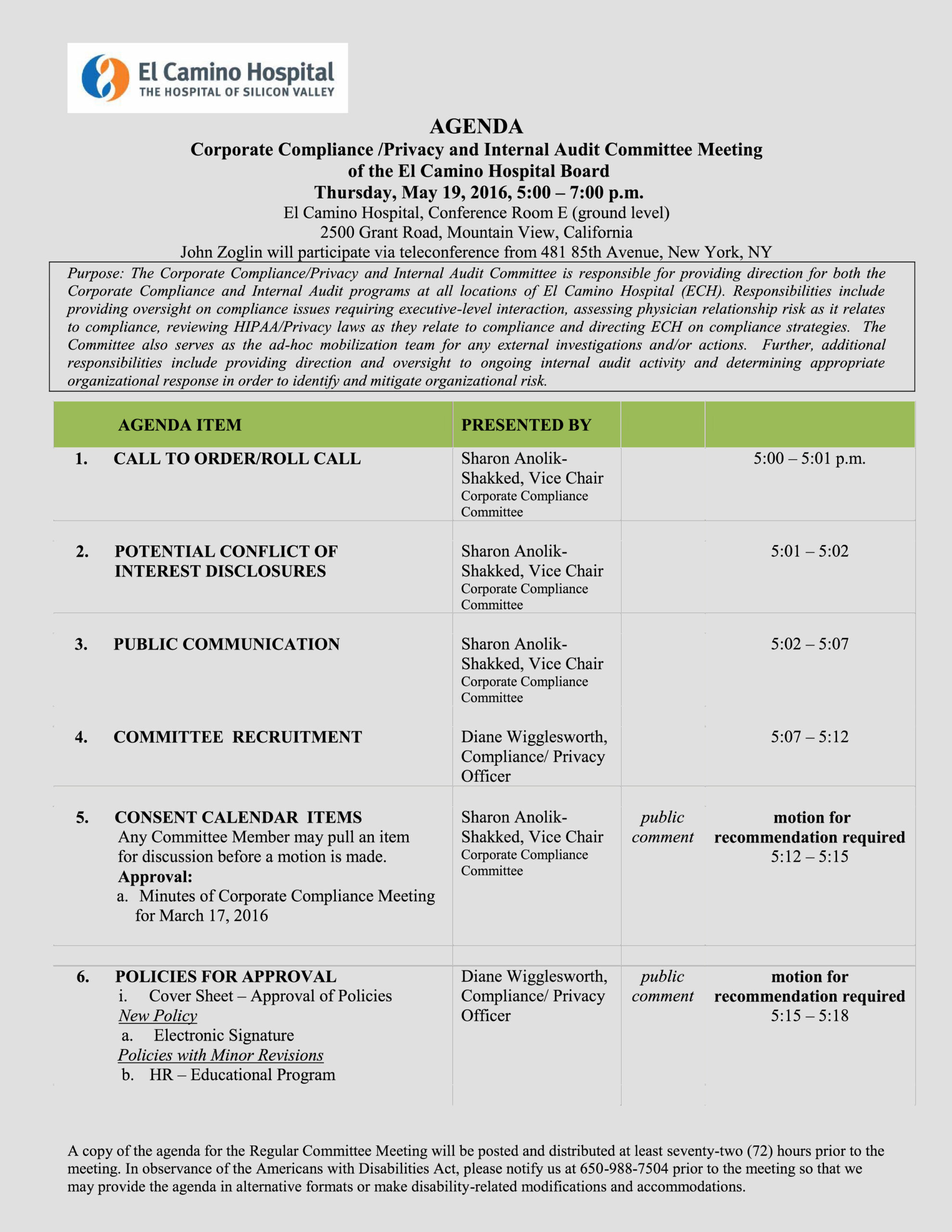
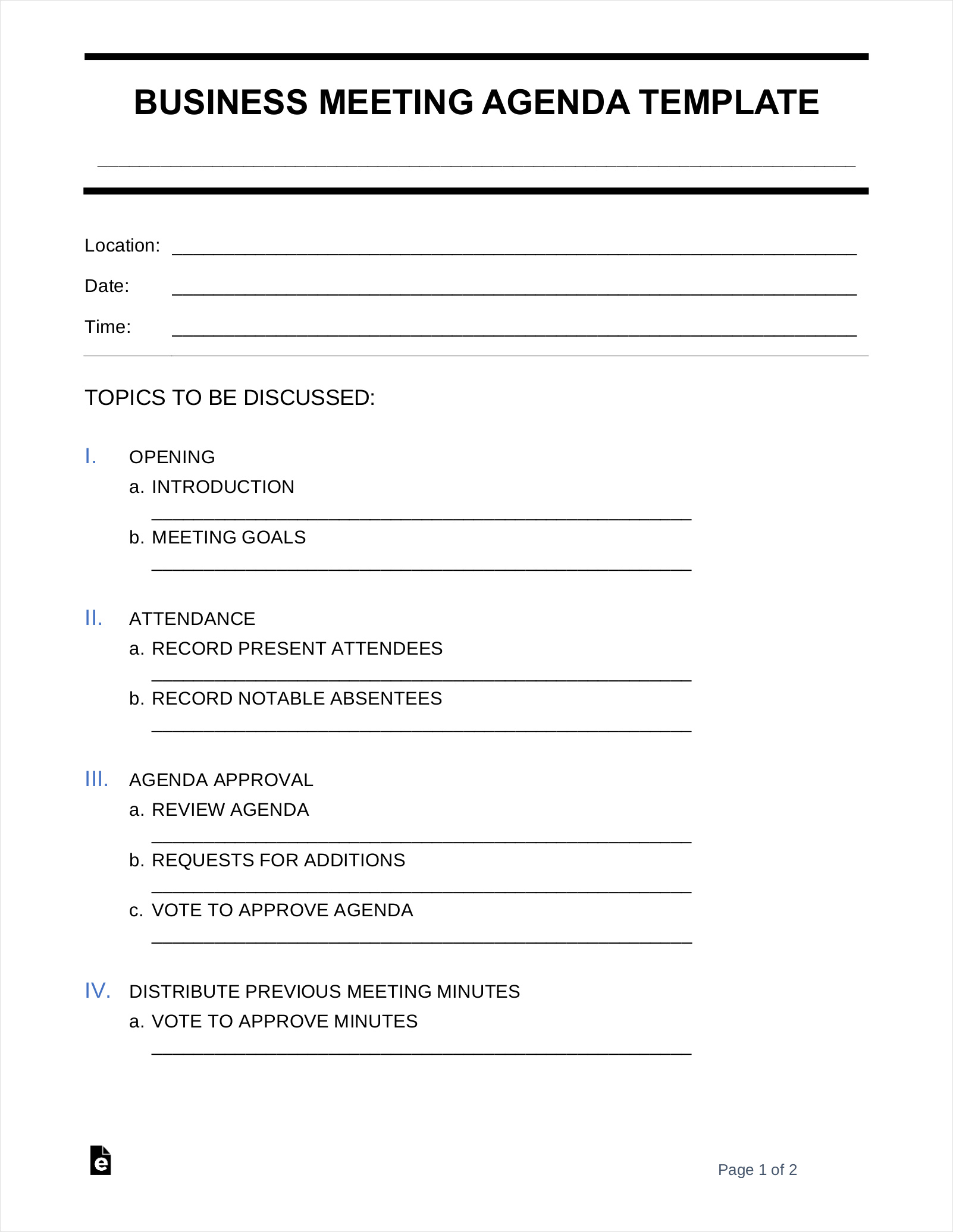
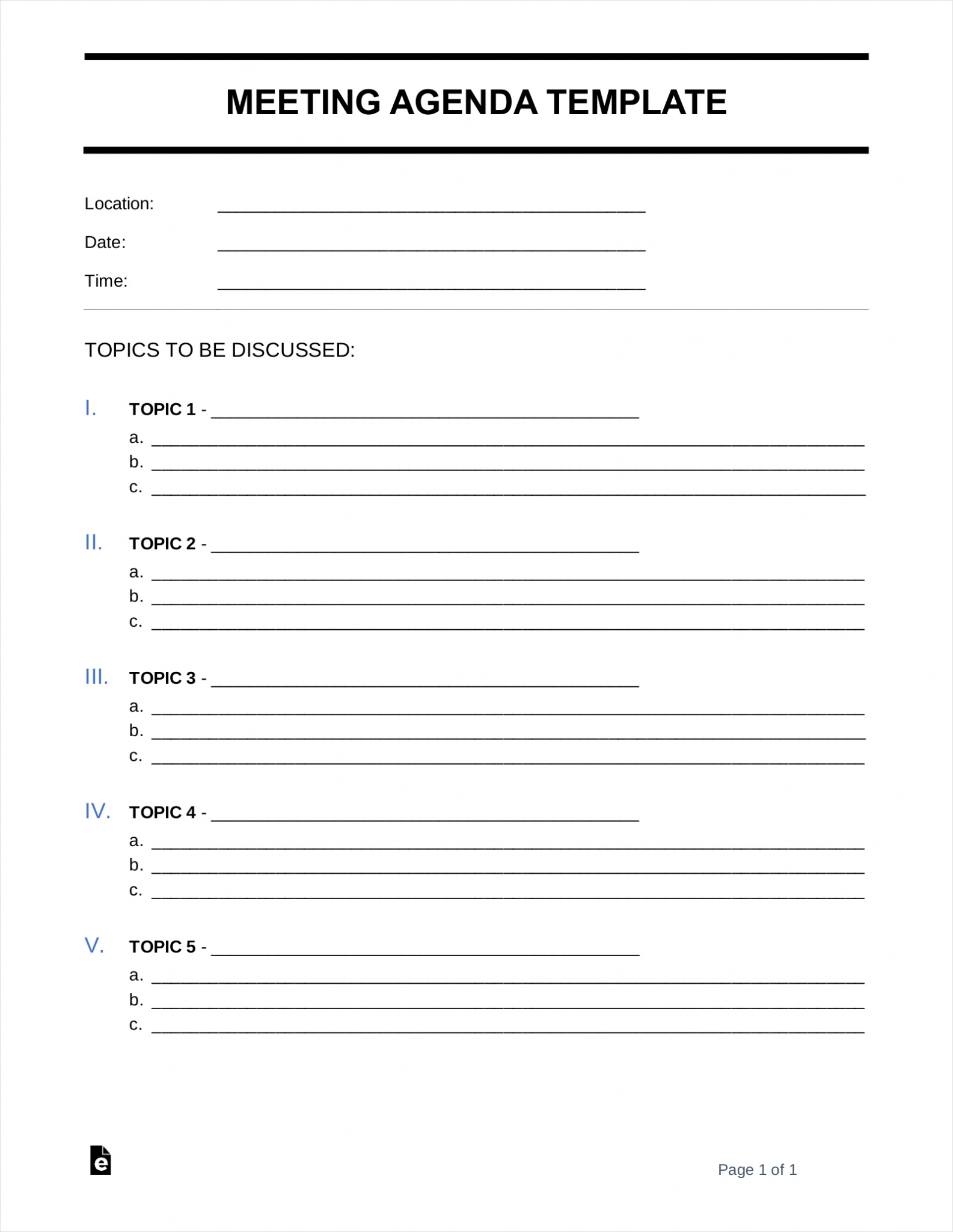
Conclusion
A well-planned and structured corporate meeting agenda is crucial for successful and productive meetings. It provides clarity, keeps participants focused, and ensures that important topics are addressed. By following the steps outlined in this guide, you can create an effective agenda that will lead to more efficient and meaningful meetings.
Corporate Meeting Agenda Template Excel – Download